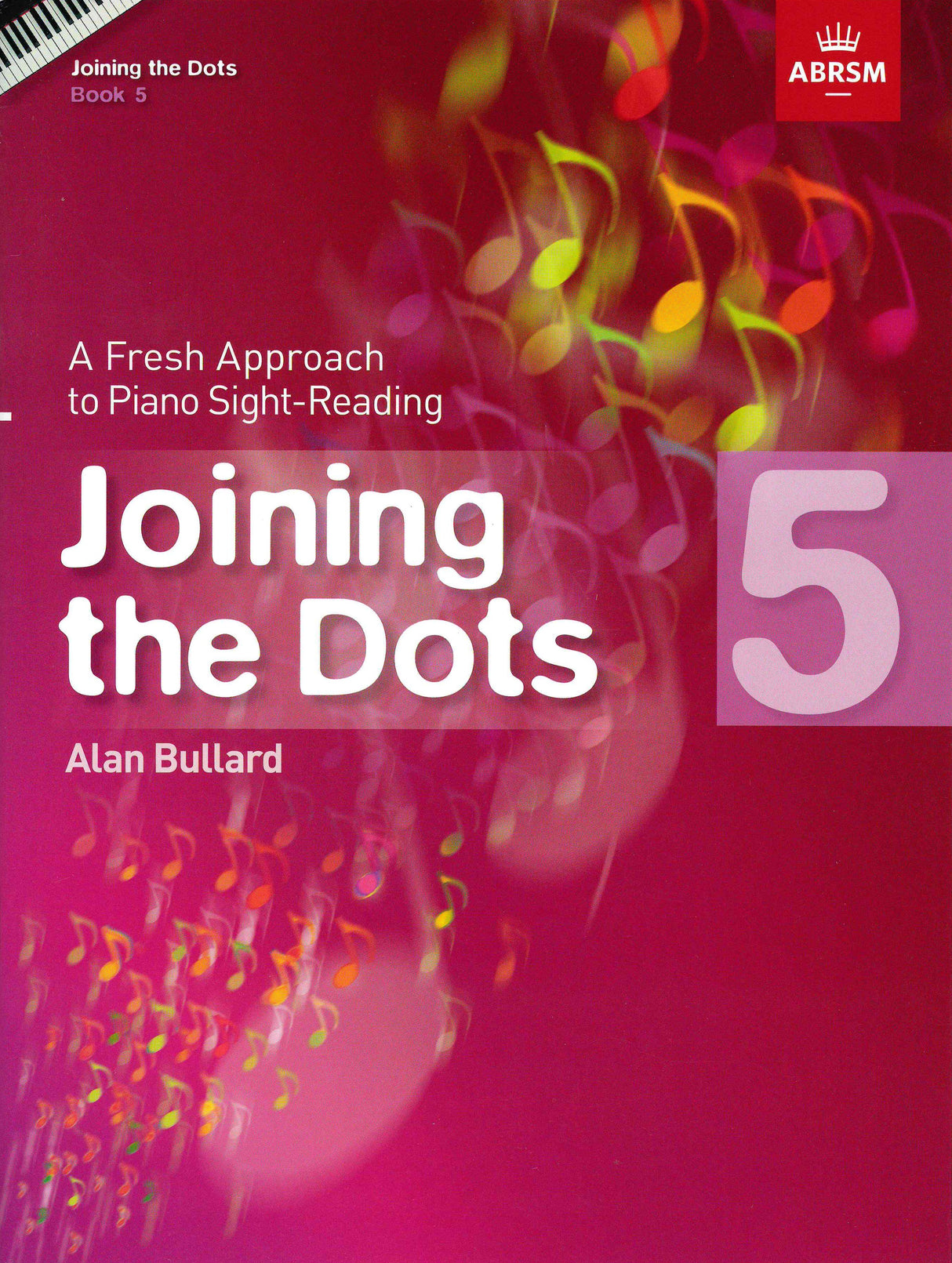ABRSM Joining the Dots for Piano - Grade 5
In stock and typically ships within 1 business day.
- Author: Alan Bullard (1947-)
- Instrumentation: Piano
- ISBN:
- Size: 9.1 x 12.0 inches
Description
A Fresh Approach to Piano Sight-Reading -- "Sight-reading can be the aspect of learning that pupils find most difficult and frustrating, and which fills them with most fear when exam-time comes along. We all know that the skill of playing at sight is one of the most useful - and time-saving - for any musician, but helping our pupils to progess with their sight-reading, rather than merely undertaking tests in it, is a challenge to which there is no easy answer. ... Joining the Dots not only join[s] the musical 'dots' but also join[s] together different aspects of music making - knowledge of keys, technical exercises, improvisation, and playing at sight. The aim is to enable more effective learning of new music by developing a greater awareness of keyboard goegraphy. ... The five books in this new series for the piano cover the keys found in ABRSM's sight-reading tests at each of Grades 1 to 5, with a separate section for each key used within the tests at the corresponding grade. ... Similar activities are presented at an equivalent level in each key, so that your pupil can jump to any section, using the varied but logically organized material, alongside pieces, scales, and arpeggios/broken chords that are being learnt in that key." (Alan Bullard)
"Bullard's series is so appealing and well conceived that even students not participating in the ABRSM system should find it immensely useful....The strength of the series lies in the fine quality and variety of the reading pieces and in the engagingly creative activities in the 'Make Music' sections....Students will applaud him because these activities are lots of fun."--Brian Marks (AMERICAN MUSIC TEACHER, December/January 2010, No. 11)
Publishers use a lot of words to describe what they sell, and we know it can be confusing. We've tried to be as clear as possible to make sure you get exactly what you are looking for. Below are descriptions of the terms that we use to describe the various formats that music often comes in.
Choral Score
A score for vocalists that only contains the vocal lines. The instrumental parts are not there for reference. Generally, cheaper than a vocal score and requires multiple copies for purchase.
Facsimile
Reproductions of the original hand-written scores from the composer.
Full Score
For ensemble music, this indicates that the edition contains all parts on a single system (there are not separate parts for each player). In larger ensembles, this is for the conductor.
Hardcover
Hardbound. Generally either linen-covered or half-leather.
Orchestral Parts
Similar to a wind set, this is a collection of parts. In the case of strings, the numbers listed are the number of copies included, though generally these are available individually (often with minimum quantities required).
Paperback
When publishers offer multiple bindings (e.g. hardcover) or study scores, this is the "standard" version. If you're planning to play the music, this is probably what you want.
Performance / Playing Score
A score of the music containing all parts on one system, intended for players to share. There are not separate parts for each player.
Set of Parts
For ensemble music, this indicates that there are separate individual parts for each player.
Solo Part with Piano Reduction
For solo pieces with orchestra, this is a version that contains a piano reduction of the orchestra parts. For piano pieces, two copies are typically needed for performance.
Study Score
A small (think choral size) copy of the complete score meant for studying, and not playing. They make great add-ons when learning concertos and small chamber works.
Vocal Score
A score prepared for vocalists that includes the piano/organ part or a reduction of the instrumental parts.
Wind Set
For orchestral music, this is a collection of wind and percussion parts. The specific quantities of each instrument are notated.
With Audio
In addition to the printed music, the edition contains recordings of the pieces. This may be an included CD, or access to files on the internet.
With / Without Fingering (Markings)
Some publishers prepare two copies - a pure Urtext edition that includes no fingering (or bowing) suggestions and a lightly edited version that includes a minimal number of editorial markings.


